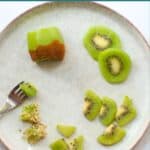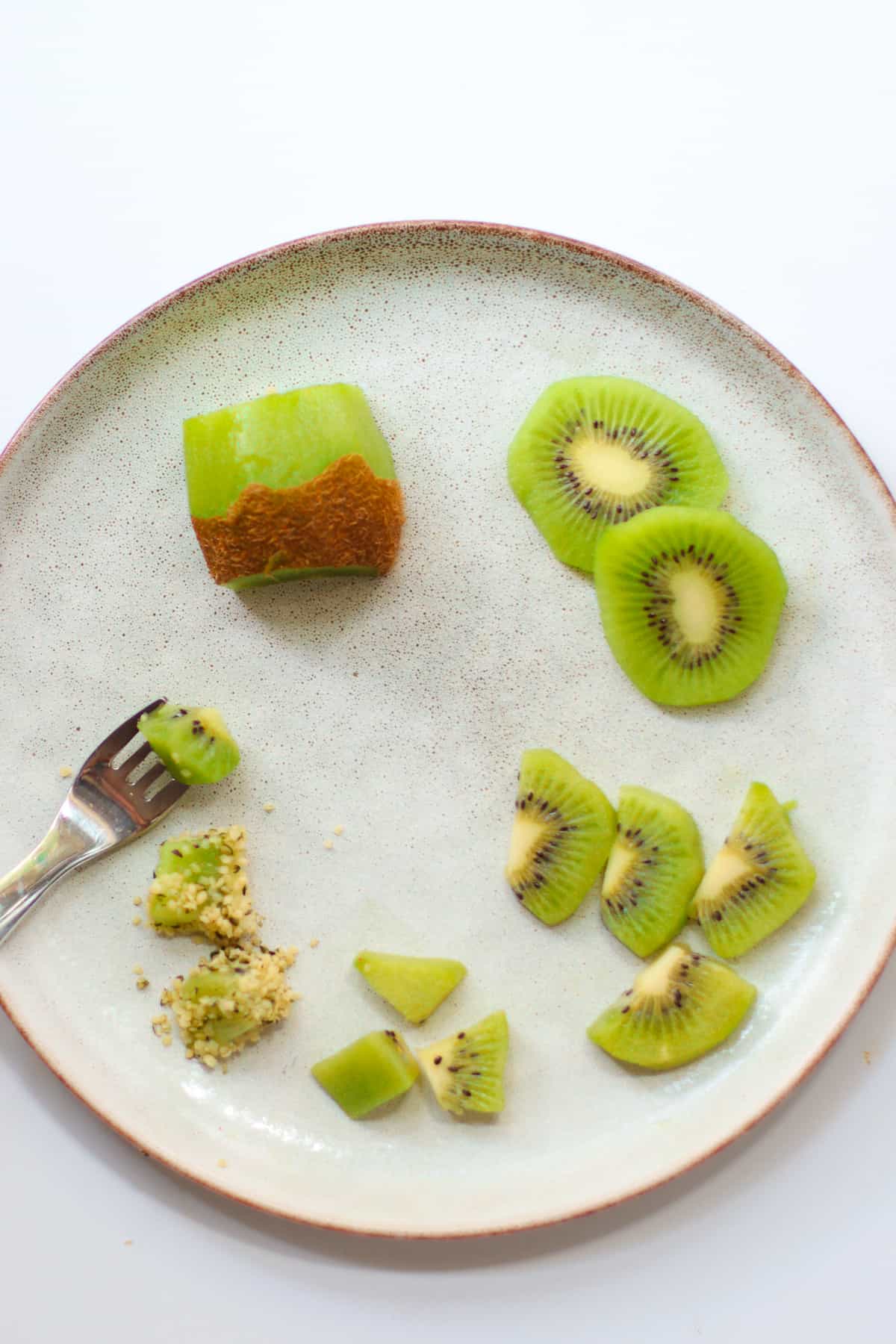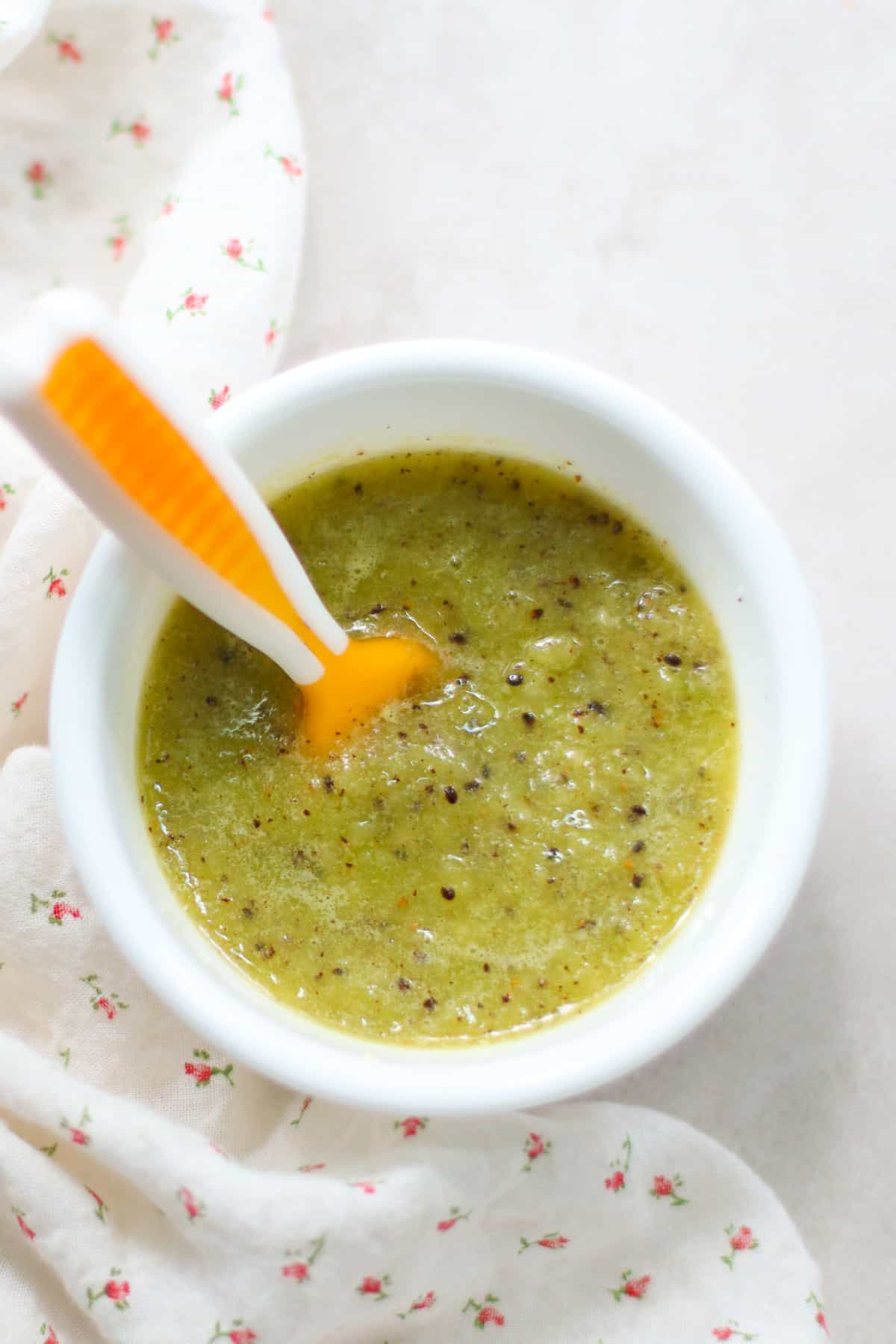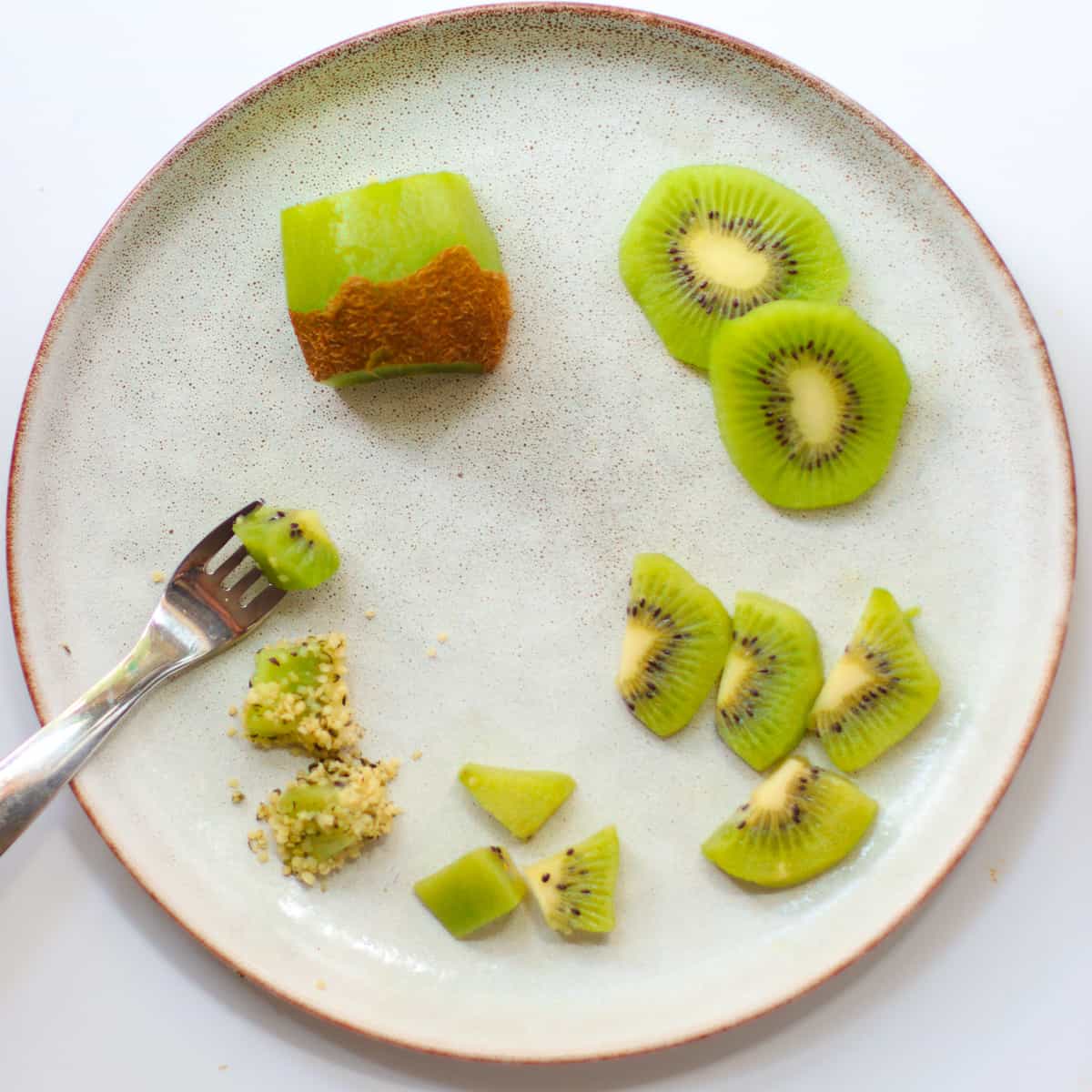When can babies eat kiwi?
Kiwi can be introduced to babies as soon as they’re ready to start solids, usually around 6 months. It’s important to remember that your baby is unique and that rather than going by the calendar, you need to make sure your baby is DEVELOPMENTALLY ready to start solids. If you’re unsure, be sure to grab this FREE handout!
Health Benefits
Kiwi is a delicious and nutritious fruit that is packed with essential nutrients, particularly vitamins C, E, and K, folate, and potassium. Vitamin C is particularly important as it enhances the absorption of iron, THE most essential nutrient for babies. Kiwi is also rich in antioxidants that boost immune function, promote eye health and reduce the risk of various chronic diseases, like heart disease and cancer. Additionally, its high fiber content can help with digestion and reduce the risk of constipation. Here are some more fiber rich foods for babies.
Is Kiwi safe for babies?
As long as the fruit is soft and ripe and is served in an age-appropriate way as shown in this article, it is safe. Kiwi is not considered a highly allergenic food. However, some individuals may experience a non-allergic reaction to kiwi, such as oral allergy syndrome (OAS) which is a condition where the immune system negatively reacts to proteins in certain fruits and vegetables. The symptoms include itching, swelling, and redness of the mouth and are usually mild and resolve within a few minutes to hours after the food is consumed. To help minimize the symptoms, try cooking the kiwi to break down the proteins responsible for triggering OAS. I recommend removing the peel, and be sure the kiwi is fully ripe.
Selecting the Best Kiwi
First look for kiwi with smooth, unblemished skin. Avoid those with bruises, cuts, or wrinkles, as they may indicate overripeness or damage. A ripe kiwi should yield slightly to pressure without being mushy. If the kiwi is firm, you can accelerate the ripening process by storing at room temperature or placing in a paper bag with a banana or apple. Once it reaches the desired ripeness, you can refrigerate to extend their shelf life.
Kiwi Puree
It truly is so simple to make! All you need are ripe kiwis! The full recipe can be found in the recipe card at the bottom of the post.
Kiwi Puree Combinations
You can serve kiwi puree by itself or mix in other foods such as:
Yogurt (pictured) Baby oatmeal Lentils Quinoa Applesauce Banana Mango Pear Beets
How to Serve Kiwi for Baby Led Weaning
6+ Months
I know it sounds counterintuitive but bigger is better and safer at this age. So try serving halved ripe and soft kiwi. You can leave on half of the skin to help with the grip and prevent the fruit from flying everywhere. Here’s a master list of the best finger foods for babies. Fold into foods Puree or mash kiwi and add to yogurt, oatmeal (try shaping into little fingers), or combining with some peanut butter and spreading onto toast. Endless possibilities!
9+ Months
Slice into rounds, half moon shapes, or bite-sized pieces. You can roll in finely ground nuts and seeds, shredded coconut, almond flour, etc. to make it easier to grab. This is a good time to introduce utensils. Your baby will most likely just play around or toss it. But it’s still great for exposure! Continue role modeling too.
12+ Months
Continue offering utensils and your child will likely surprise you one day! If you want to learn how to prepare other specific food(s), check out my How To Series!





